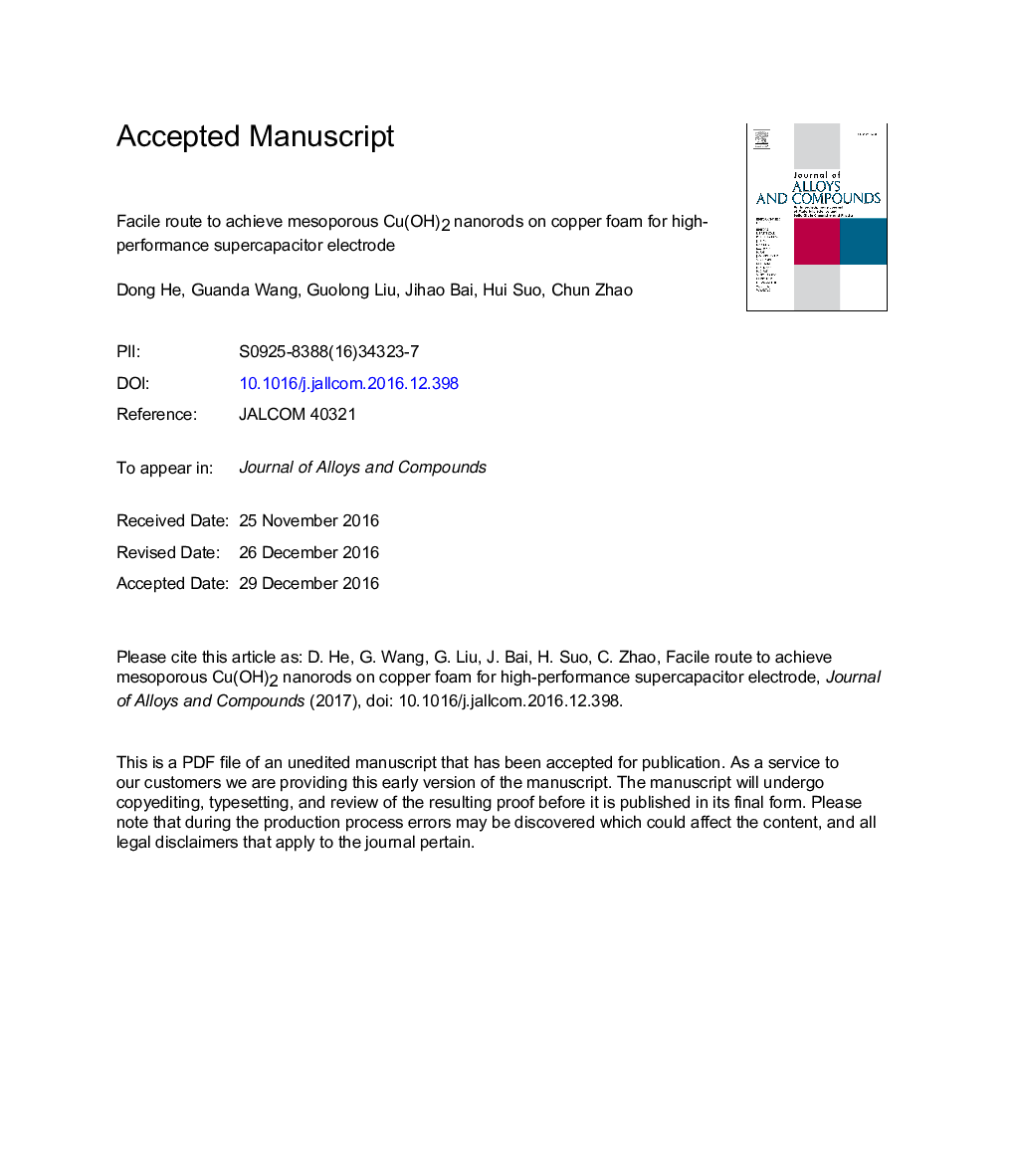| Article ID | Journal | Published Year | Pages | File Type |
|---|---|---|---|---|
| 5460597 | Journal of Alloys and Compounds | 2017 | 21 Pages |
Abstract
In this work, the three-dimensional (3D) mesoporous Cu(OH)2 nanorods were fabricated on copper foam via a facile and cost-effective surface oxidation method, a product that can be directly used as a binder-free electrode for supercapacitors. The synthesized 3D Cu(OH)2 nanorods demonstrate high surface area, uniform pore size distribution characteristics and 3D quasi-connect structures, and the copper foam substrate not only undertakes the role of current collector but also the copper source of the reaction. Therefore, the as-prepared electrode can provide numerous active sites for redox reactions, exhibit low intrinsic resistance and shorten the ions diffusion pathway. Benefiting from that, the following characteristics are obtained: high capacitance of 2.151 F cmâ2, good rate capability of 88.3% retention upon increasing the current density by 10 times, good coulombic efficiency of 89.4% and good cycling durability of 97.3% retention after 5000 cycles. In addition, an asymmetric supercapacitor is assembled using the mesoporous Cu(OH)2 as positive electrode and activated carbon as negative electrode. The device delivers a high energy density of 4.152 mW h cmâ3 and a high power density of 383.222 mW cmâ3. The results suggest a great potential for fabrication of high performance energy storage devices.
Keywords
Related Topics
Physical Sciences and Engineering
Materials Science
Metals and Alloys
Authors
Dong He, Guanda Wang, Guolong Liu, Jihao Bai, Hui Suo, Chun Zhao,
